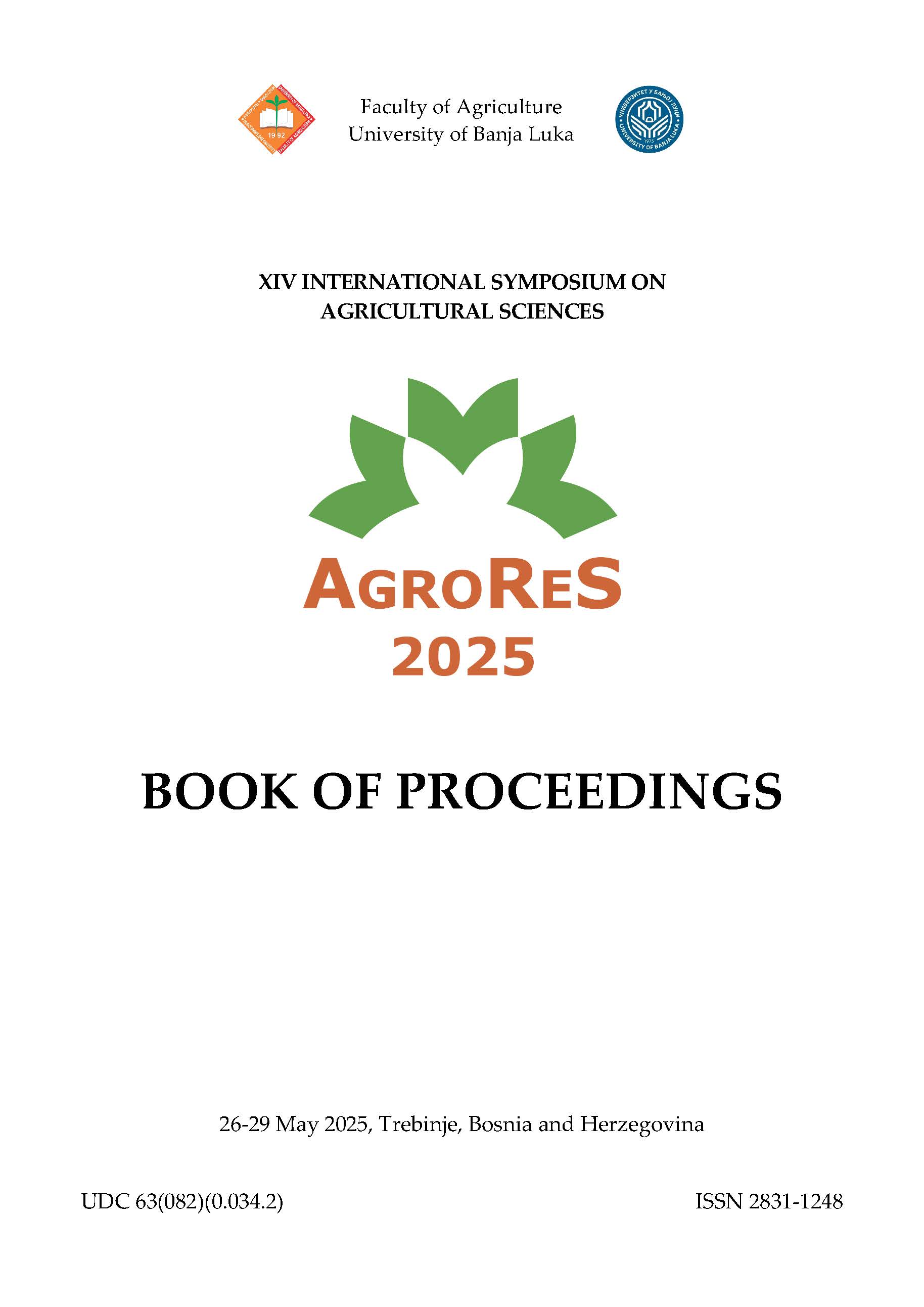Livestock production as a potential for international trade exchange, the case of the Republic of Croatia
DOI:
https://doi.org/10.63356/agrores.2025.022Keywords:
livestock production, international trade, imports, exports, trade balanceAbstract
The key feature of the current international trade exchange of livestock, meat, and meat products in the Republic of Croatia is the relatively high and growing foreign trade deficit. In order to overcome the negative economic trends and improve the situation, it is essential to find new or revitalize existing markets, which is crucial for overcoming various weaknesses in international trade. Through an integrated approach that includes sustainable resource management, the introduction of new technologies, and production inputs, it is possible to create the conditions necessary to improve the situation in international trade flows. Therefore, this paper will analyze trade components, imports, and exports of livestock as economic categories during the period from 2019 to 2023. The methodology used in this paper will include calculations for import coverage by exports, relative import coverage, expressed comparative advantage, calculation of the relative foreign trade balance, and statistical trend analysis. The aim of this paper is to present the trade of livestock, specifically pigs, cattle, sheep, and goats, through international trade flows, i.e., imports and exports, to show the trade balance, and, through trend calculations, project the trade exchange for the next five-year period.
References
Arsenović, Đ., & Krstić, B. (2002). Konkurentnost poljoprivrednih gazdinstava. Beograd: Poljoprivredni fakultet Univerziteta u Beogradu, Poljoprivredni fakultet Univerziteta u Istočnom Sarajevu. pp. 111-113.
Bašić, F. Kisić I., Mesić M., Butorac A., & Sabolić M., (2002). Regionalizacija hrvatske poljoprivrede. Zagreb: Agronomski fakultet Svečilišta u Zagrebu, p. 274.
Bjelić, P. (2008). Međunarodna trgovina. Beograd: Ekonomski fakultet, p. 123.
Blanchard, O. (2005). Macroeconomics. Oxford: Prentice Hall, p. 47.
Bošnjak, D., Tica, N., & Rodić, V. (2003). Ekonomska obeležja proizvodnje kukuruza. Zbornik radova Instituta za ratarstvo i povrtarstvo, 121-130.
Defilippis, J. (2005). Poljoprivreda i razvoj. Zagreb: Školska knjiga, p. 67.
Državni zavod za statistiku Republike Hrvatske, DZS (2024). https://dzs.gov.hr/
Kovačević, M. (2002). Međunarodna trgovina. Beograd: Centar za izdavačku delatnost Ekonomskog fakulteta Univerziteta u Beogradu, p. 81
Krueger, A. O. (2009). Prospects for the global trading system. London: Centre for Economic Policy Research, p. 58
Krugman P. R. (2009). Međunarodna ekonomija – teorija i politika. Beograd: Data Status Beograd, p. 89.
Olson, K., & Vu, L. (2009). Economic efficiency in farm households: trends, explanatory factors, and estimation methods. Agricultural Economics, 40(5), 587-599.
Popović, B., Maletić, R., & Maletić, Z. (2009). Analysis of livestock resources in function of strengthening production possibilities of family households in Republic of Serbia. Ava congress, International congress on the aspects and visions of applied economics and informatics, Themetic Proceedings, Debrecen, pp. 162-169.
Simić, J., & Stevanović, S. (1999). Razvoj svinjarstva i proizvodnja svinjskog mesa u SR Jugoslaviji. Ekonomika poljoprivrede, 46(3-4), 167-185.
Stojadinović Jovanović, S. (2012). Evropska unija u međunarodnoj trgovini robom na početku XXI veka. Ekonomski pogledi, 1, 60-80.
Downloads
Published
Issue
Section
License
Copyright (c) 2025 Dragan Dokić, Vesna Gantner

This work is licensed under a Creative Commons Attribution-NonCommercial-NoDerivatives 4.0 International License.



